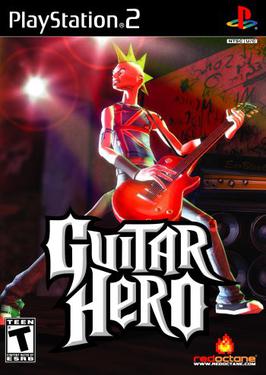Content Table:
Guitar Hero: The Origins Of Video Game Rock
Guitar Hero was originally released on the PS2 on one glorious day in November of 2005. This much-anticipated video game was special in that instead of the usual control pad used to play, the game was designed for use with a life-like guitar-shaped device.
The Unique Controller
This unique controller was modeled after a real guitar called the Gibson SG. Using the guitar controller was very similar to using a real guitar, albeit with a few minor adjustments for simplicity’s sake. Instead of containing several frets and six strings, the Guitar Hero controller had 5 fret buttons of differing colors and a strum bar for strumming.
The Development and Soundtrack
Originally developed by a video game company named Harmonix, Guitar Hero went on to receive numerous awards for its ingenuity and for the core of the game’its musical soundtrack. With 47 rock tracks by various big-name artists, the game featured a wide range of music spanning from the modern day back to the 60s.
Success and Expansion
Due to the success of the first game, a second was released for the PlayStation 2 in 2006, this time with an astonishing 64 musical tracks. Additional features included the ability to play multiplayer against friends and non-friends alike. It went on to become the fifth highest-grossing game of 2006 for the PS2. In response to unprecedented demand, a Guitar Hero II version was released for the Xbox 360. This version came with a special guitar and more songs.
Guitar Hero III: Legends of Rock
The third installment in the series, aptly named Guitar Hero 3, was released in October of 2007. This time, the company behind the game was Activision, which had taken over development from Harmonix. However, gamers need not worry, as Activision is a major powerhouse in the gaming industry, known for producing classics like the Tony Hawk series and the Call of Duty series.
The much-anticipated Guitar Hero 3 confirmed to contain at least 46 songs, introduced new characters, and featured an all-new Battle Mode. Characters from the previous games, such as Casey Lynch, Axel Steel, Judy Nails, Izzy Sparks, Johnny Napalm, Xavier Stone, and Lars Umlaut, made their return. A brand new playable character named Midori was also introduced, while Clive and Pandora were removed from the game. For the boss battles, three unique challenges were included, one of them being the legendary Slash, who was rumored to be a playable character as well.
Cross-Platform Availability
Guitar Hero III, also known as Legends of Rock, was made available on various platforms, including the PS2, Xbox 360, PS3, and Wii. Activision also actively looked to bring the game to the Nintendo DS, expanding the reach of this iconic series.
The Impact of Guitar Hero
Guitar Hero revolutionized the music game genre, paving the way for future music games and solidifying its place in gaming history. Its blend of accessibility, a broad music catalog, and engaging gameplay helped it become a cultural phenomenon, attracting both gamers and music enthusiasts alike. The game’s influence can still be seen in the gaming landscape today, as it demonstrated the potential for rhythm-based games to achieve commercial success.
Whether you’re a seasoned player or new to the franchise, Guitar Hero offers an engaging experience that celebrates the joy of music and gaming. So grab your guitar controller, choose your favorite track, and let the rock ‘n’ roll spirit take over!



